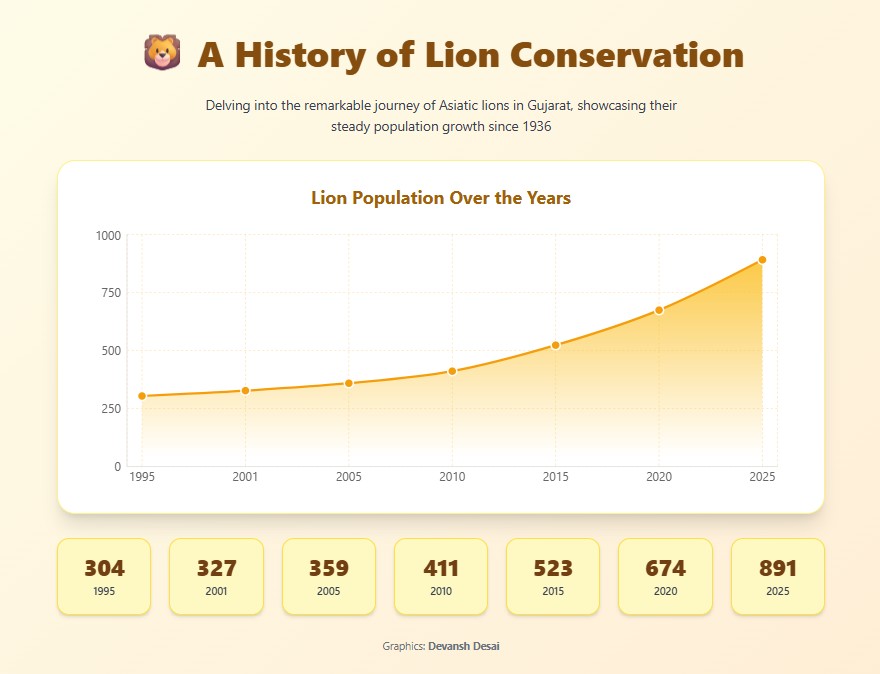
Ahmedabad: The Gujarat Forest Department has announced the results of the 16th Asiatic Lion Population Estimation-2025, revealing a significant increase in the state’s lion population to 891. The census, conducted every five years, took place in two phases from May 10th to May 13th.
The comprehensive count covered an expansive 35,000 square kilometer area across 58 talukas in 11 districts where lions are known to reside. These districts include Junagadh, Gir Somnath, Bhavnagar, Rajkot, Morbi, Surendranagar, Devbhumi Dwarka, Jamnagar, Amreli, Porbandar, and Botad. The ‘Direct Beat Verification’ method was employed for the estimation.
The latest figures show a total of 891 Asiatic lions, comprising 196 males, 330 females, 140 sub-adults, and 225 cubs. This marks a substantial rise from the 2015 census, which recorded 523 lions, indicating a 27% increase at that time. The last census in 2020 had registered 674 lions.
The Asiatic lion holds a prominent place as the logo for the central government’s “Make in India” initiative. In line with conservation efforts, the Forest Department has decided to expand the lions’ habitat. Development of the Barda Sanctuary as an alternative haven for the lions has been underway since last year.

Historical Context of Lion Census:
The practice of conducting a lion census by the Forest Department dates back to 1936. Consistent monitoring, evaluation, and conservation measures have led to a steady growth in the lion population. According to available estimates, the 1995 census recorded a total of 304 lions (adult males, females, and cubs). Subsequent counts showed 327 lions in 2001, 359 in 2005, 411 in 2010, 523 in 2015, and 674 in 2020.
‘Direct Beat Verification’ Method Explained:
The ‘Direct Beat Verification’ method is considered highly effective for estimating the Asiatic lion population. Its straightforward statistical analysis and implementation contribute to nearly 100% accuracy with a negligible margin of error. This method has been successfully utilized for over three decades across diverse terrains including forests, grasslands, coastal areas, and revenue lands.
For the census, the entire area was divided into units such as regions, zones, and sub-zones. Approximately 3,000 personnel, including regional, zonal, and sub-zonal officers, enumerators, assistant enumerators, supervisors, and volunteers, participated in the count. They were provided with prescribed forms and maps of their assigned areas to record and verify lion sightings. Details noted included observation time, direction of movement, sex, age, any identification marks, GPS location, and group composition.
Modern Technology Aids Census:
Advanced technological tools were integral to the census for individual lion identification. High-resolution cameras and camera traps were deployed. Several lions have been fitted with radio collars, aiding in tracking their location and group movements. The e-GujForest application was utilized for real-time data entry of lion observations. Furthermore, GIS software was employed to delineate survey areas and develop detailed maps for tracking lion movement, distribution patterns, and habitat utilization.




